Prescription drug abuse and addiction is a significant public health problem in the U.S. and the world, with millions of people misusing prescription medication every year.
According to the National Institute on Drug Abuse (NIDA), about 14.3 million people 12 and older reported misusing any prescription psychotherapeutic drug in the past 12 months. That’s around 5.1% of the population, or 1 in 20 people.
This article explores the most commonly abused prescription drugs, providing prescription drug abuse statistics and information about viable treatment options.
Understanding Prescription Drug Abuse
Prescription drug abuse occurs when someone uses medications prescribed by healthcare providers in ways not intended by the providers. This may include taking them more frequently or in higher doses, using someone else’s prescription, or consuming the medication for non-medical reasons like seeking “a high.”
Prescription drug abuse can lead to physical dependence, addiction, and severe health consequences. What heightens these risks is that prescription drug abuse is common enough to have become a significant public health concern.
Types of Commonly Abused Prescription Drugs
The most commonly abused prescription drugs are usually those that lead to dependence:
- Opioids: Prescription opioid misuse is concerningly common, with some statistics claiming that up to 19% of people who use pain medication develop an addiction or a use disorder.
- Depressants: About 4.9 million people misused prescription tranquilizers or sedatives in the past 12 months. About 3.9 million misused benzodiazepines in the same period.
- Stimulants: About 3.7 million people misused prescription stimulants in the past 12 months.
Most Commonly Commonly Abused Prescription Medications
Out of all prescription medications, these are considered some of the most addictive and abused.
Oxycodone
Oxycodone is a powerful opioid analgesic prescribed to manage moderate to severe pain. Misuse of oxycodone can lead to euphoria, drowsiness, and respiratory depression. Chronic misuse may result in physical dependence, addiction, and overdose, potentially leading to death.
Being one of the most commonly prescribed opioids, OxyContin (an oxycodone formulation initially presumed to be non-addictive) significantly contributed to the opioid crisis the U.S. and the rest of the world are currently going through, with retail sales increasing 866% between 1997 and 2007.
An estimated 4.3 million people misused oxycodone products in the past year, according to SAMHSA.
Hydrocodone
Hydrocodone is another opioid pain reliever, often prescribed for moderate to severe pain or as a cough suppressant. Abuse of hydrocodone can cause euphoria, dizziness, and impaired motor functions. Long-term misuse increases the risk of addiction, liver damage (when combined with acetaminophen), and potentially fatal overdose.
In 2015, hydrocodone products were the most commonly misused subtype of prescription pain reliever. An estimated 7.2 million people aged 12 or older misused them.
Xanax
Xanax (alprazolam) is a benzodiazepine prescribed to treat anxiety and panic disorders. Abusing Xanax can lead to sedation, dizziness, and impaired coordination. Chronic misuse can result in physical dependence, severe withdrawal symptoms, cognitive impairment, and an increased risk of overdose, especially when mixed with other depressants like alcohol.
Around 4.1 million people misused alprazolam products like Xanax in the past 12 months.
Valium
Valium (diazepam) is another benzodiazepine tranquilizer used to treat anxiety, muscle spasms, and seizures. Abuse of Valium can cause drowsiness, confusion, and muscle weakness. Long-term misuse may lead to dependence, withdrawal symptoms, memory problems, and overdose, particularly when combined with other substances.
Alprazolam products drive benzodiazepine tranquilizer misuse, but at least 1.3 million people misused non-alprazolam benzodiazepines like Valium in 2015.
Adderall
Adderall is a stimulant containing amphetamine salts, prescribed primarily for ADHD and narcolepsy. Abusing Adderall can result in heightened energy, euphoria, and increased heart rate. Chronic misuse poses risks such as cardiovascular problems, anxiety, paranoia, and severe psychological dependence.
Approximately 4.8 million people 12 and older misused amphetamine products like Adderall in 2015.
Ritalin
Ritalin (methylphenidate) is another stimulant used to treat ADHD and narcolepsy. Ritalin abuse can cause increased alertness, euphoria, and loss of appetite. Long-term misuse may lead to cardiovascular issues, anxiety, aggressive behavior, and addiction, with a significant risk of severe psychological and physical health consequences.
Signs and Symptoms of Prescription Drug Abuse
Recognizing the signs and symptoms of prescription drug abuse is one of the best ways to prevent addiction.
Physical Signs of Prescription Drug Misuse
Physical signs of prescription drug misuse can vary depending on the type of drug being abused but often include noticeable changes in the body’s functioning and appearance. Common signs include:
- Drowsiness or excessive sleepiness.
- Weight changes (either gain or loss).
- Poor coordination.
- Frequent flu-like symptoms.
Other signs may include gastrointestinal issues like nausea, vomiting, or constipation. Additionally, pupils may appear constricted (in the case of opioids) or dilated (with stimulants).
Behavioral Signs of Prescription Drug Misuse
Behavioral signs of prescription drug misuse often appear as significant changes in daily habits and social interactions. Individuals may exhibit:
- Increased secrecy, such as hiding medication or lying about their use.
- Decline in performance at work or school.
- Frequent absences from responsibilities and engagements.
- A lack of interest in formerly enjoyable activities.
- Financial problems from spending excessive money on drugs.
- “Doctor shopping” to obtain multiple prescriptions or use other illegal means to acquire medications.
Psychological Signs of Prescription Drug Misuse
Psychological signs of prescription drug misuse can include:
- Noticeable changes in mood, cognition, and emotional stability.
- Heightened anxiety, depression, or paranoia.
- Frequent mood swings. Episodes of euphoria can be followed by irritability or depression.
- Cognitive impairments, such as memory problems, confusion, and difficulty concentrating.
Additionally, individuals may exhibit signs of psychological dependence, where obtaining and using the drug becomes a central focus of their thoughts and activities, often to the detriment of their mental health and well-being.
Prevention and Education
Preventing prescription drug abuse requires a multifaceted approach that includes education, proper medication management, and community involvement. Effective strategies include:
- Public awareness campaigns. Educational campaigns to inform the public about the dangers of prescription drug abuse and safe medication practices.
- Prescription Monitoring Programs (PMPs). Systems to track prescriptions and identify suspicious patterns.
- Safe storage and disposal. To prevent misuse, encourage patients to store medications securely and dispose of unused drugs properly.
- Non-opioid pain management. Promoting alternative pain management methods, such as physical therapy and non-opioid medications.
- Early intervention. Identifying and addressing risk factors for substance abuse early, such as mental health issues or family history.
The Role of Healthcare Providers
Healthcare providers play a critical role in preventing prescription drug abuse. Their responsibilities include:
- Screening and assessments. Regularly screening patients for signs of substance abuse and assessing risk factors.
- Responsible prescribing. Prescribing medications judiciously, considering non-opioid alternatives when appropriate, and avoiding high-dose or long-term opioid prescriptions without proper justification.
- Patient monitoring. Monitoring patients for signs of misuse, dependency, or diversion and adjusting treatment plans as necessary.
- Education and communication. Educating patients on the risks of prescription drugs, proper usage, and the importance of adhering to prescribed doses.
- Referral to specialists. Referring patients to addiction specialists or pain management clinics when necessary for comprehensive care.
The Importance of Patient Education
Patient education is vital in preventing prescription drug abuse. Key components include:
- Understanding medication. Ensuring patients understand the purpose of their medication, how to take it correctly, and potential side effects.
- Risks of misuse. Informing patients about the dangers of taking higher doses, using someone else’s prescription, or mixing medications with alcohol or other drugs.
- Safe practices. Teaching patients about the importance of secure storage, not sharing medications, and properly disposing of unused drugs.
- Recognizing abuse. Helping patients recognize signs of dependency or misuse in themselves or others and encouraging them to seek help if needed.
- Support resources. Providing information on available support resources, such as helplines, counseling services, and support groups for those struggling with medication misuse.
Seek Support for Prescription Medication Misuse
Recognizing the signs of misuse and understanding the risks and consequences can help individuals and communities tackle this problem effectively. So, if you or one of your loved ones is currently misusing prescription medication, we encourage you to seek help from your healthcare providers.
With the help of evidence-based therapy, medication management, and peer support, you and your loved ones can manage and overcome their medication misuse.

